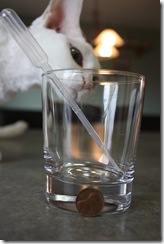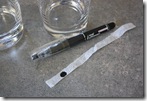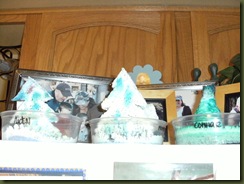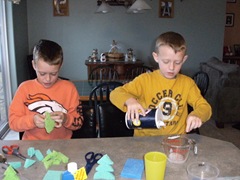This is a great investigation that Kid Scientists of all ages can participate in. Read on for extensions for Big Kid Scientists.
Materials: eye dropper or pipette, penny, cup of water, towel (the cat is optional…Rooney was helping)
Procedure:
- Ask Kid Scientists to predict how many drops of water will fit on a penny. Little Kid scientists should record their prediction. Big Kid Scientists can grab this lab report to record their thinking.
- Using room temperature water, carefully add drops of water to the top of the penny, counting how many fit.
- How close was your prediction?
Extensions for Little Kid Scientists:
- Will you be able to fit more drops with cold water or warm water?
- Will you be able to fit more drops on the “heads” side or the “tails” side?
- Will you be able to fit more drops on a clean penny or a dirty penny?
- What questions do you want to test?
Extensions for Big Kid Scientists:
- Big Kid Scientists can grab this new investigation to test coin size
- Research and write a scientific explanation of why so many drops of water will fit on a penny
As always, The Science Mommy would love to hear about your investigation. Let me know how it turns out!
















